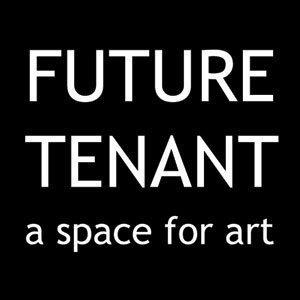Opening on Friday May 8, 2015, "Daydreaming Through a Child's Eyes" is a solo exhibition by Pittsburgh artist David Calfo. Through this exhibition, Future Tenant worked with two high school apprentices through our AMP'd program and involved them with hands-on arts management practices. Our apprentices and David transform Future Tenant into an interactive dreamscape, where children and adults are free to let their imaginations run wild. Prior to the exhibition opening, Development & Outreach Manager Christine Nolan conducted an interview with David to know the stories behind his work.
Could you give us a brief introduction of who you are and how you became an artist?
David: My name is David Calfo, and I'm a Pittsburgh salvage artist, historical renovator, community activist and adventurist. As long as I can remember, I have been building things. After doing historical home and business renovations for years and creating art pieces on the side, I decided to see where my passion for artistic expression will lead me, and have been focusing on art full time.
Can you give a short description about the concept of the work you are showing?
David: The pieces for this exhibit stem from my love of the Saturday cartoons from my childhood. Back in the days before computer games, we had to create our own adventures. Cartoon characters would strap rockets to roller skates or build gizmos to catch the roadrunner, and in the afternoons we’d head off to the woods with whatever tools we could scrounge up from the garage to build these contraptions on our own. The
Rocket Sled in this exhibit was inspired directly by the creations of Wylie E. Coyote. Others are evolution of my childhood imaginings.
What is your creative process? How long does it usually take you to complete a project or artwork?
David: It really just depends on what I have taken inspiration from. Once I see something in my head, it could take as little as a day to, in this case, about 3 months, to complete. Depending on the medium I’m using to express my vision, whether through photography, painting or more elaborate construction, time can be highly variable. Sometimes I start working on something in my shop only to be startled by the sun coming up the next morning. Some projects I have to draw out first and may spend the next weeks or months gathering materials I need to make it a reality.
How does your work with found objects inspire certain pieces?
David: It really just depends on the found object and how it fits into my internal “cool factor” process. It could be anything from the shape or size of the object, or just how I see it in relation to other things. Inspiration is hard to articulate.
You talked about your work for Daydreaming Through A Child’s Eyes being inspired by nostalgia and youthful play. What sorts of things do you want your audience to take a way from experiencing this show? What were your “youthful imaginings” when you were a child?
David: I want the adults to remember their childhood play and hopefully this exhibit will evoke memories and forgotten feelings of endless summers spent running around, creating games or toys out of whatever we could find. Memories of a happier, simpler time. I‘d like kids to want to put down the game controller and take some inspiration to create their own play, to imagine and to dream up crazy stuff of their own instead of
relying on something else entertaining them. As for me, I’d always imagined being sort of a Superman- able to fly or dive to great depths in the ocean without the need for a plane or a submarine.
Do you admire any other artists?
David: All of the Renaissance artists- not only were they artists in their own right, but they were students as well. If I had to pick one, I think it would have to be Leonardo Da Vinci: inventor, artist, dreamer.
Are you working on any new projects at the moment? If so, where can we follow your work?
David: I’m working on an Earth Day event and a Bike Rack submission for the Cultural Trust. I am always working on new pieces, so the best way to keep up with me is through Twitter: @davecalfo
How did you find out about Future Tenant?
David: Future Tenant actually found me! You selected me to show some pieces from the Arbor Aid show in 2013.




















